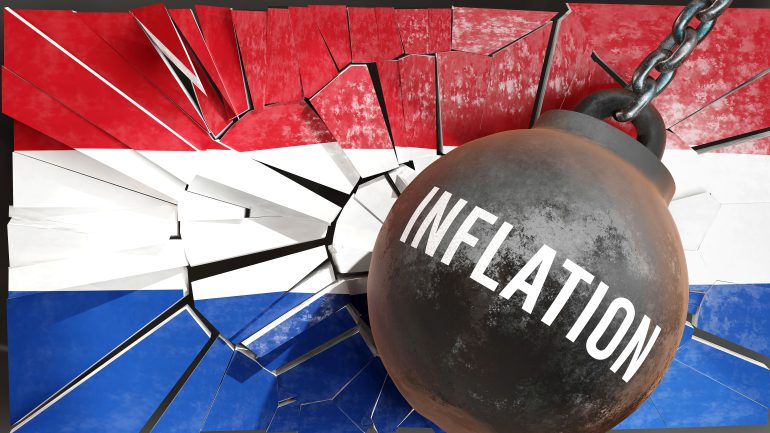According to Statistic Netherlands (CBS), the cost of all consumer goods and services increased by 10.3 percent in July compared to the same month last year. Inflation in June was 8.6 percent. The price increases for electricity and rent were the main causes of the inflation. For the first time since September 1975, the inflation rate is above 10 percent.
Since the beginning of the war in Ukraine in February, energy prices have been rapidly increasing in the Netherlands. This is brought on by the growing ambiguity surrounding the Russian gas supply. In July, the annual cost of electricity increased by 108 percent. Despite the temporary reduction in the energy VAT from 21 percent to 9 percent since last month, the rise was still higher than the 84 percent of June. Additionally, consumers saw an increase in supermarket costs. Food prices have increased by more than 12 percent since last year.
Since 1996, CBS has released two distinct inflation rates, one based on the Harmonized Index of Consumer Prices (HICP) and one based on the Consumer Price Index (CPI). In the Netherlands, consumer goods and services were 11.6 percent more expensive in July than they were in the same month a year earlier, up from 9.9 percent in June, according to the HICP. The CPI is calculated every month in comparison to the same month the previous year, and this rise is used to calculate inflation. The CPI displays the evolution of the cost of a selection of products and services as they were generally purchased by Dutch households. Thus, inflation of 10 percent in July 2022 means that prices for consumer goods are 10.3 percent higher than they were in July 2021, not 10.3 percent higher than they were in June 2022. Therefore, the 10.3 percent inflation rate in July is not an rise compared to the 8.6 percent inflation rate in June.
Compared to a year ago, energy in particular got more expensive. Energy costs have increased by 108 percent since July 2021. Inflation was also driven higher by housing rents. Preliminary data indicates that in July 2022, rents were 3.0 percent more than they were a year earlier. Compared to July 2021, when rent increases were on average 0.8 percent, this is a higher increase. The maximum rent increase for regulated rental agreements will be based on income starting on 1 July 2022. The maximum rent increase for households with incomes below the threshold is 2.3 percent. The monthly rent increase for high-income households is limited to 100 euros. Rent increases under regulated rental agreements were prohibited as of 1 July 2021.
Additionally, the cost of food increased by 12.3 percent on average in July compared to the same month last year. Grain, dairy, plant-based oils, sugar and ice cream in particular have seen high price rises. In July compared to the previous month, the price of motor fuel increased less dramatically. The cost of motor fuel increased by 2.5 percent in July compared to the same month last year. The annual price rise in June was 35 percent. In July, the average price of a litre of Euro 95 at the pump was 2.21, compared to 2.35 euros in June. A litre of diesel cost 2.14 euros in June, but only 2.07 euros in July. Inflation was also seen in the rising cost of package holidays and banking services.
But the Netherlands is not alone: inflation in the eurozone increased from 8.6 percent in June to 8.9 percent in July. A decrease is not yet on the cards, unfortunately.
Written by Nicole Kerr
